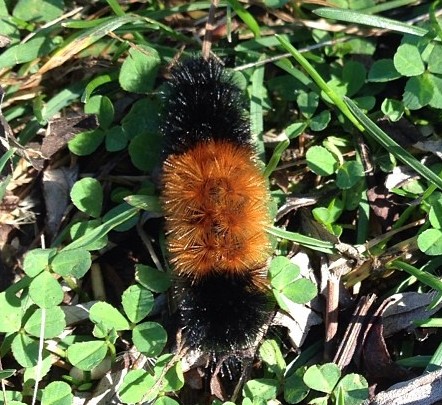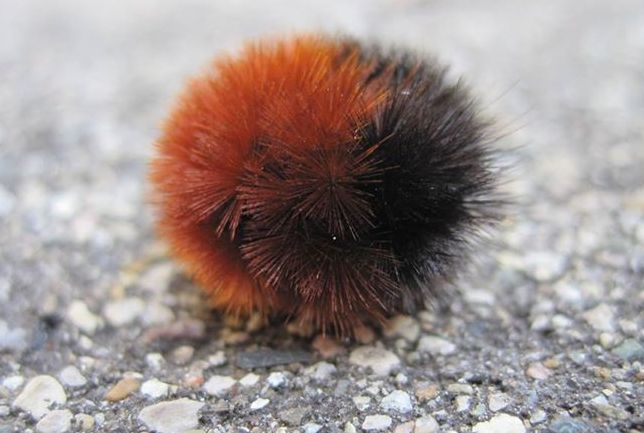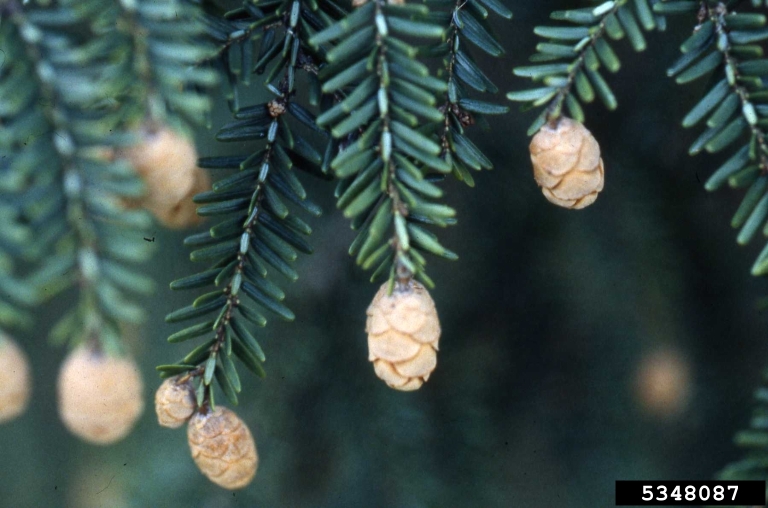 Fall brings with it the familiar and well-loved sight of woolly bear caterpillars crossing roadways and sidewalks. Looking like orange and black-banded bottle brushes, these 1-2 inch caterpillars dodge vehicles and bicycles to get to the other side.
Fall brings with it the familiar and well-loved sight of woolly bear caterpillars crossing roadways and sidewalks. Looking like orange and black-banded bottle brushes, these 1-2 inch caterpillars dodge vehicles and bicycles to get to the other side.
With luck and time, these beloved caterpillars will transform into Isabella Tiger Moths, a yellowish-brown moth not nearly as cute as its immature form.
Woollys in Winter
Woolly bears are one of the few caterpillars to overwinter as caterpillars, risking freezing temperatures and predation to emerge in the spring. Quite simply, woolly bears crossing roadways are risking life and legs to find the perfect leaf litter, the perfect board, or the perfect pile of wood chips under which to hibernate. They need a spot sheltered from drying winds, a bit of moisture, and cover from predators.
When they find that spot, they curl up in a tight ball and settle in for a long winter. Their bristle hairs are a deterrent to predators (although raccoons have been observed brushing the hairs off and then eating these insect delicacies). The spiky ball shape makes the caterpillars slippery to predators. If you try to pick up a woolly bear in its hibernating pose, you may find it slips from your grasp.

Come Springtime
If a woolly bear survives a New England winter, it will emerge in the spring very hungry. At this time of year, you may see caterpillars wandering again as they search for food plants. The caterpillar eats for a short while and then spins a cocoon, made of bristle hairs held together with silk, in a protected spot under rocks or bark. In two weeks, an Isabella Tiger Moth emerges from the cocoon.
The cycle begins again when the female Isabella Tiger Moth lays clusters of eggs on a variety of hostplants. Favorites include dandelion, grass, meadowsweet, nettle, and more. Eggs hatch in 4-5 days, and the young caterpillars feed in groups, becoming solitary as they grow older. Over 3-4 weeks, the caterpillars undergo 6 molts, or skin sheddings, and it is the second generation each summer that will cross roads to find that perfect overwintering spot.
Fun Facts about Woolly Bears
- Woolly bears are very fast (for a caterpillar, at least). They can travel up to 4 feet per minute, which is roughly equivalent to .05 miles per hour.
- Contrary to folklore, the woolly bear is not an accurate weather forecaster. Does the width of its orange band predict the severity of the oncoming winter? No. Instead, each time the caterpillar sheds a skin, its orange band grows a bit larger. So, broader orange bands are most likely an indication of the age of the caterpillar, not of future winter weather.
- Banner Elk, North Carolina has been celebrating the Woolly Worm Festival since 1978. During the “Woolly Worm Race,” pet woolly bears race up a 3 foot long string. The winner becomes the official predictor of winter.


 Of all the evergreens in the winter woods, eastern hemlocks are the friendliest.
Of all the evergreens in the winter woods, eastern hemlocks are the friendliest. Hemlock groves are magical to non-human animals, too. Because hemlock branches hold so much snow, snow depths beneath the trees are significantly lower. Deer often bed down underneath these trees, taking advantage of shallower snow and sheltering branches. Treat yourself to an early morning snowshoe or hike. You may be able to follow deer tracks from hemlock to hemlock, finding packed snow outlining the shape of a deer underneath each one.
Hemlock groves are magical to non-human animals, too. Because hemlock branches hold so much snow, snow depths beneath the trees are significantly lower. Deer often bed down underneath these trees, taking advantage of shallower snow and sheltering branches. Treat yourself to an early morning snowshoe or hike. You may be able to follow deer tracks from hemlock to hemlock, finding packed snow outlining the shape of a deer underneath each one. Sadly, our Massachusetts hemlocks are threatened by
Sadly, our Massachusetts hemlocks are threatened by